Translator's Note:
1. Deferred is a new feature of jQuery1.5. Many people translate it as "Asynchronous queue", I think is more reliable, after all, it has nothing to do with "delay", but I still use the word deferred in this article.
2. This article is mentioned in the jQuery1.5 release blog, and it is also the most classic and in-depth article introducing deferred. In view of the fact that there are currently relatively few Chinese materials, they are specially translated for everyone’s study and reference.
3. The whole article adopts free translation. If there is any inappropriateness, please feel free to point it out.
The Deferreds object newly added in jQuery1.5 can decouple the processing method of task completion from the task itself. This is nothing new in the JavaScript community, as the two JS frameworks Mochikit and Dojo have implemented this feature for a long time. But with Julian Aubourg rewriting the AJAX module in jQuery 1.5, deferreds have naturally become the internal implementation logic. Using deferreds objects, multiple callback functions can be bound to be executed when the task is completed, or even after the task is completed. These tasks can be asynchronous or synchronous.
More importantly, deferreds have been implemented as an internal implementation of $.ajax(), so you can automatically get the traversal brought by deferreds when calling AJAX. For example, we can bind the callback function like this:
// $ .get, asynchronous AJAX request
var req = $.get('foo.htm').success(function (response) {
// AJAX processing function after success
}).error( function () {
// AJAX failure post-processing function
});
// This function may call
doSomethingAwesome() before AJAX ends;
// Add another AJAX Callback function, AJAX may have ended at this time, or it may not have ended yet
// Since $.ajax has built-in deferred support, we can write like this
req.success(function (response) {
/ / This function will be called after AJAX has finished, or immediately if AJAX has finished
});
We are no longer limited to only one success, failure or completion callback function . Instead, callback functions that are added at any time are placed in a first-in, first-out queue.
As can be seen from the above example, the callback function can be attached to the AJAX request (any observable task), even after the AJAX request has ended. The organization of the code is very good, we no longer need to write long callback functions. It's like $.queue() meets pub/sub (publish-subscribe mechanism, generally used in event-based models).
Going deeper, imagine a scenario like this, after some concurrent AJAX requests have all ended Execute a callback function. I can easily accomplish this through jQuery’s function $.when():
function doAjax() {
return $.get('foo.htm');
}
function doMoreAjax() {
return $.get('bar. htm');
}
$.when(doAjax(), doMoreAjax()).then(function () {
console.log('I fire once BOTH ajax requests have completed! ');
}).fail(function () {
console.log('I fire if one or more requests failed.');
});
Open the example in jsFiddle
The above example works properly thanks to the fact that the return value of each jQuery AJAX method contains a promise function to track asynchronous requests. The return value of the Promise function is a read-only view of the deferred object. (The promise is a read-only view into the result of the task.) Deferreds determine whether the current object is observable by detecting whether the promise() function exists in the object. $.when() will wait for all AJAX requests to end, and then call the callback functions registered through .then(), .fail() (the specific callback functions called depend on the end status of the task). These callback functions will be executed in the order in which they were registered.
Even better, $.when() accepts a function or an array of functions as parameters (Translator’s Note: This is not quite right, $.when accepts one or more deferred objects, or native JS Object. Note that function arrays cannot be used as parameters), so you can combine these asynchronous tasks at will.
$.ajax() returns an object, which is associated with some deferred functions, such as promise(), then(), success(), error() . However, you cannot operate the original deferred object, only the promise() function (Translator's Note: Remember the promise just mentioned is a read-only view), and the isRejected() and isResolved() functions that can detect the deferred status.
But why not return a deferred object? If a complete deferred object is returned, then we have more control and may be able to trigger the deferred object at will (Translator's Note: I translated resolve as trigger, which is to trigger all callback functions registered on the deferred object) deferred object, thus Causes all callback functions to be executed before the AJAX request ends. Therefore, to avoid potentially breaking the whole paradigm, only return the dfd.promise(). promise().) (Translator’s Note: If you are confused about the exact meaning of the above paragraphs, it doesn’t matter. I will write an article later to analyze the reasons in depthRegistering callback function (Registering Callbacks) In the above example, we use then(), success(), fail() methods to register callback functions. In fact, there are more methods that can be used, especially when processing AJAX requests. The method depends on your concern about the result status. You first started this task on: ' timestamp '
Functions available for all deferred objects (AJAX, $.when or manually created deferred objects):
.fail( failCallbacks )
The AJAX object contains 3 additional methods, two of which will be mapped to the methods mentioned above. These methods are mainly for compatibility with previous code:
.error( failCallbacks )
You can also register a complete callback function, which will be called after the request is completed, regardless of whether the request is successful or failed. The success or error function, and the complete function are actually the done function alias of a separate deferred object. This deferred object created inside $.ajax() will trigger the callback function (resolve) after AJAX ends.
Copy code
Copy code
$.get("/foo/", fn );
Creating your own Deferred
We know that $.ajax and $.when implement the deferred interface internally, but we can also create deferred objects manually:
function getData() {
return $.get('/foo/');
}
function showDiv() {
var dfd = $.Deferred();
$('#foo').fadeIn(1000, dfd.resolve);
return dfd. promise();
}
$.when(getData(), showDiv()).then(function (ajaxResult) {
console.log('The animation AND the AJAX request are both done!' ; >Open the example in jsFiddle
In showDiv(), we create a deferred object, perform an animation, and then return a promise. This deferred object will be triggered (resolved) after fadeIn() ends. Between the return of this promise and the triggering of the deferred object (note: the deferred here refers to the object created by $.when, not the object returned by showDiv()), a then() callback function will be registered. This callback function will be executed after both asynchronous tasks have completed. getData() returns an object (Translator's Note: It is actually an XMLHttpRequest object encapsulated by jQuery) with a promise method, which allows $.when() to monitor the end of this AJAX request. The manual steps we took to return a promise in showDiv() is handled for us internally by $.ajax() and $.when(). 1/15/2011: Julian pointed out in the comments that the above syntax works Reduced to $.Deferred(fn).promise(). Therefore, the following codes at both ends are equivalent: Copy the code
The code is as follows:
$('#foo').fadeIn(1000, dfd.resolve);
}).promise();
}
Add callback functions for custom deferred objects (Defer your Deferreds)
We can go one step further and provide getData() and showDiv() registers callback functions separately, just like we register callback functions in $.then(). (Translator’s note: The following paragraphs are repetitive and have the same meaning, so I won’t translate them. Let’s look at the code)
Copy code
The code is as follows:
// I think this is the author’s original intention, to register a callback function for the custom deferred function
dfd.done(function () {
console. log('Fires after the animation succeeds');
});
$('#foo').fadeIn(1000, dfd.resolve);
}).promise();
}
$.when(getData(), showDiv()).then(function (ajaxResult) {
console.log('Fires after BOTH showDiv() AND the AJAX request succeed!');
// 'ajaxResult' is the result returned by the server
});
Open the example in jsFiddle
Chaining Hotness Deferred's callback function can be called in a chain, as long as the function returns a deferred object (Translator's Note: dfd.promise() returns a read-only deferred object ). This is an actual code (via @ajpiano!) Copy the code
The code is as follows:
function saveContact(row) {
var form = $.tmpl(templates["contact-form"]),
valid = true,
messages = [],
dfd = $.Deferred();
/*
* Here is the client verification code
*/
if (!valid) {
dfd.resolve({
success: false,
errors: messages
});
} else {
form.ajaxSubmit({
dataType: "json",
success: dfd.resolve,
error : dfd.reject
});
}
return dfd.promise();
};
saveContact(row).then(function (response) {
if (response .success) {
// Client verification passed and data was saved successfully
} else {
// Client verification failed
// Output error message
}
}) .fail(function (err) {
// AJAX request failed
});
The saveContact() function first verifies the validity of the form data, and then saves the validity status in The variable is valid. If validation fails, a direct deferred will be triggered (passing a JS object containing the success status code and error information as parameters to the callback function). If the verification passes, the data is submitted to the server and the deferred object is triggered after the AJAX is successfully completed. fail() will handle 404, 500, etc. HTTP status codes that can prevent the AJAX request from completing successfully.
Non-observable Tasks
Deferreds are very useful for decoupling tasks and task processing functions, whether they are asynchronous tasks or synchronous tasks. A task may return a promise, but it may also return a string, object, or other type.
In this example, when the "Lanch Application" link is clicked for the first time, an AJAX request is sent to the server and returns the current timestamp. This timestamp will then be saved to the link's data cache. When the link is clicked again, the timestamp is simply retrieved from the cache and returned without making an AJAX request.
function startTask(element) {
var timestamp = $.data(element, 'timestamp');
if (timestamp) {
return timestamp;
} else {
return $.get('/start-task/').success( function (timestamp) {
$.data(element, 'timestamp', timestamp);
});
}
}
$('#launchApplication').bind('click ', function (event) {
event.preventDefault();
$.when(startTask(this)).done(function (timestamp) {
$('#status').html('
});
loadApplication();
});
When $.when() finds that its first parameter has no promise function (and is therefore unobservable), it creates a new deferred object, triggers the deferred object, and returns the promise read-only object. Therefore, any unobservable task can also be passed to $.when().
One thing to note is that if an object itself has a promise function, this object cannot be used as a deferred object. jQuery determines whether an object is deferred by checking whether it has a promise function, but jQuery does not check whether the promise actually returns a usable object. Therefore the following code will error:
var obj = {
promise: function () {
// do something
}
};
$.when(obj).then(fn);
Conclusion (Conclusion)
Deferreds propose a new robust way to handle asynchronous tasks. Unlike the traditional way of organizing code into a callback function, the new deferred object allows us to bind multiple callback functions at any time (even after the task ends), and these callback functions will be called in a first-in, first-out manner. The information in this article may be difficult to digest, but once you master the use of deferred objects, you will find that organizing code that executes asynchronously will be very easy.
This article was originally written by Sansheng Shishang and first published by Blog Park. Please indicate the source when reprinting
 jquery实现多少秒后隐藏图片Apr 20, 2022 pm 05:33 PM
jquery实现多少秒后隐藏图片Apr 20, 2022 pm 05:33 PM实现方法:1、用“$("img").delay(毫秒数).fadeOut()”语句,delay()设置延迟秒数;2、用“setTimeout(function(){ $("img").hide(); },毫秒值);”语句,通过定时器来延迟。
 jquery怎么修改min-height样式Apr 20, 2022 pm 12:19 PM
jquery怎么修改min-height样式Apr 20, 2022 pm 12:19 PM修改方法:1、用css()设置新样式,语法“$(元素).css("min-height","新值")”;2、用attr(),通过设置style属性来添加新样式,语法“$(元素).attr("style","min-height:新值")”。
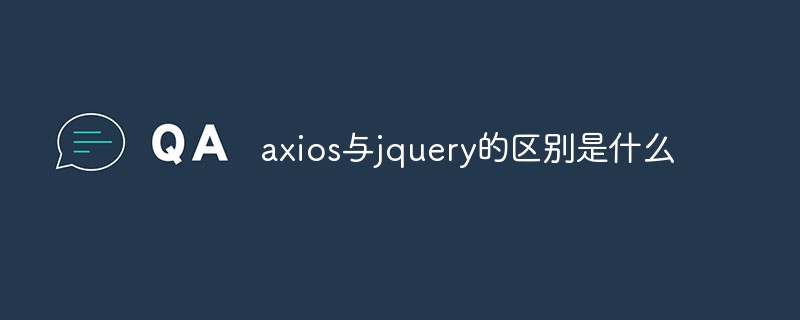 axios与jquery的区别是什么Apr 20, 2022 pm 06:18 PM
axios与jquery的区别是什么Apr 20, 2022 pm 06:18 PM区别:1、axios是一个异步请求框架,用于封装底层的XMLHttpRequest,而jquery是一个JavaScript库,只是顺便封装了dom操作;2、axios是基于承诺对象的,可以用承诺对象中的方法,而jquery不基于承诺对象。
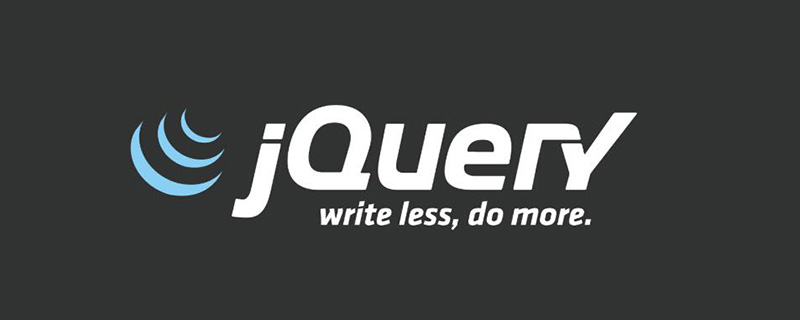 jquery怎么在body中增加元素Apr 22, 2022 am 11:13 AM
jquery怎么在body中增加元素Apr 22, 2022 am 11:13 AM增加元素的方法:1、用append(),语法“$("body").append(新元素)”,可向body内部的末尾处增加元素;2、用prepend(),语法“$("body").prepend(新元素)”,可向body内部的开始处增加元素。
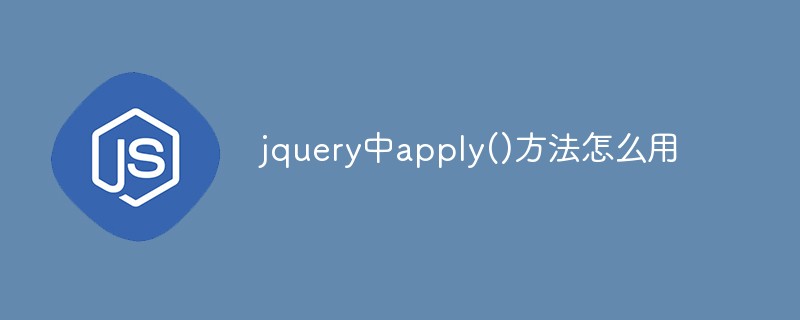 jquery中apply()方法怎么用Apr 24, 2022 pm 05:35 PM
jquery中apply()方法怎么用Apr 24, 2022 pm 05:35 PM在jquery中,apply()方法用于改变this指向,使用另一个对象替换当前对象,是应用某一对象的一个方法,语法为“apply(thisobj,[argarray])”;参数argarray表示的是以数组的形式进行传递。
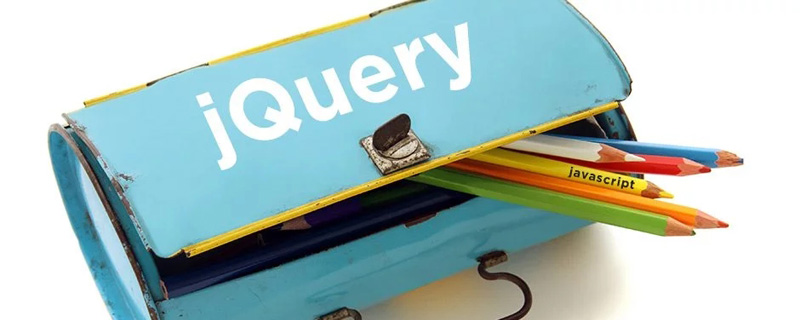 jquery怎么删除div内所有子元素Apr 21, 2022 pm 07:08 PM
jquery怎么删除div内所有子元素Apr 21, 2022 pm 07:08 PM删除方法:1、用empty(),语法“$("div").empty();”,可删除所有子节点和内容;2、用children()和remove(),语法“$("div").children().remove();”,只删除子元素,不删除内容。
 jquery on()有几个参数Apr 21, 2022 am 11:29 AM
jquery on()有几个参数Apr 21, 2022 am 11:29 AMon()方法有4个参数:1、第一个参数不可省略,规定要从被选元素添加的一个或多个事件或命名空间;2、第二个参数可省略,规定元素的事件处理程序;3、第三个参数可省略,规定传递到函数的额外数据;4、第四个参数可省略,规定当事件发生时运行的函数。
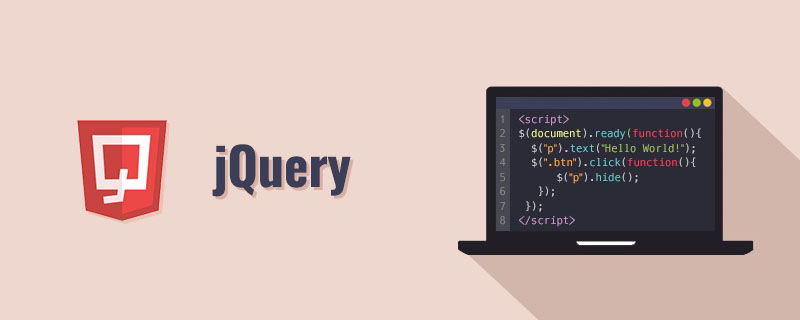 jquery怎么去掉只读属性Apr 20, 2022 pm 07:55 PM
jquery怎么去掉只读属性Apr 20, 2022 pm 07:55 PM去掉方法:1、用“$(selector).removeAttr("readonly")”语句删除readonly属性;2、用“$(selector).attr("readonly",false)”将readonly属性的值设置为false。


Hot AI Tools

Undresser.AI Undress
AI-powered app for creating realistic nude photos

AI Clothes Remover
Online AI tool for removing clothes from photos.

Undress AI Tool
Undress images for free

Clothoff.io
AI clothes remover

AI Hentai Generator
Generate AI Hentai for free.

Hot Article

Hot Tools

Atom editor mac version download
The most popular open source editor

VSCode Windows 64-bit Download
A free and powerful IDE editor launched by Microsoft

MinGW - Minimalist GNU for Windows
This project is in the process of being migrated to osdn.net/projects/mingw, you can continue to follow us there. MinGW: A native Windows port of the GNU Compiler Collection (GCC), freely distributable import libraries and header files for building native Windows applications; includes extensions to the MSVC runtime to support C99 functionality. All MinGW software can run on 64-bit Windows platforms.

SublimeText3 Linux new version
SublimeText3 Linux latest version

mPDF
mPDF is a PHP library that can generate PDF files from UTF-8 encoded HTML. The original author, Ian Back, wrote mPDF to output PDF files "on the fly" from his website and handle different languages. It is slower than original scripts like HTML2FPDF and produces larger files when using Unicode fonts, but supports CSS styles etc. and has a lot of enhancements. Supports almost all languages, including RTL (Arabic and Hebrew) and CJK (Chinese, Japanese and Korean). Supports nested block-level elements (such as P, DIV),






